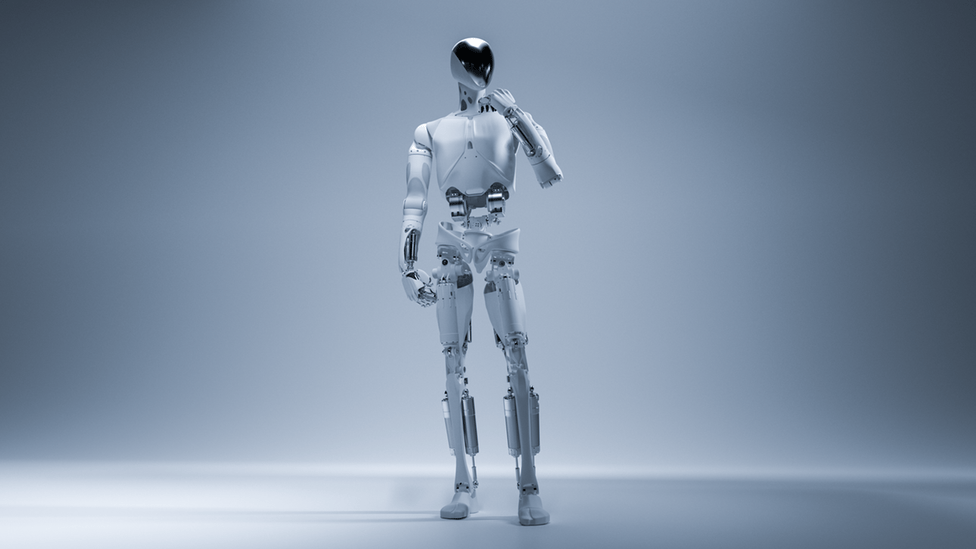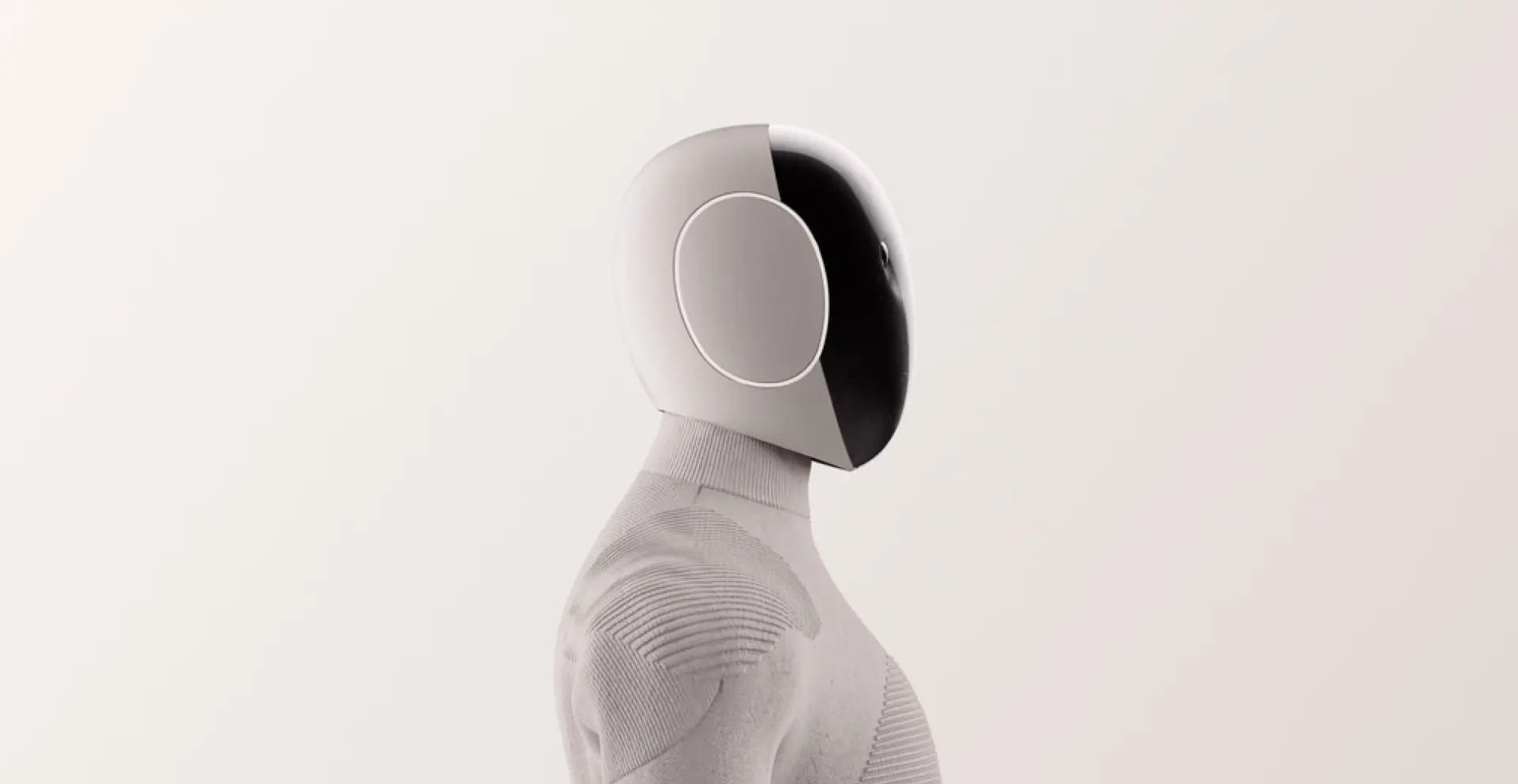IRON’s performance was so convincing that it ignited a global online debate, with countless viewers convinced it was nothing more than a person in a very clever suit.
The skepticism was so intense that the company realized explaining wouldn't be enough. To prove the world wrong, they had to do something drastic, revealing a series of surprising truths about the machine that walks like a human but thinks like a car.

XPENG IRON (Image Credit: XPENG)
They Literally Cut It Open On Stage to Prove It Was Real
The "human-in-a-suit" speculation after IRON's AI Day debut was so rampant that XPENG had to mount a multi-stage campaign to prove its authenticity. Initially, CEO He Xiaopeng noted that if you stood close, you could hear the distinct sound of the cooling fan, showed that the ear-like indentations were actually microphone arrays, and demonstrated that the robot's hands were too small to contain a human's.
When that wasn't enough, XPENG took the most dramatic step imaginable. In a moment that quickly went viral, the engineering team took a pair of scissors to IRON's leg live on stage, cutting away its flexible skin and artificial "bionic muscles" to expose the metal joints, actuators, and wiring underneath for all to see.

XPENG IRON without leg cover (Image Credit: XPENG)
I hope this is the last time that Iron has to prove it is itself.
The Goal Isn't Just Human-Like, It's "Extreme Anthropomorphism"
Unlike many purely functional, skeletal robots, XPENG's core design philosophy is "to be as human-like as possible." This strategy of "extreme anthropomorphism" isn't just an aesthetic choice; it's a deeply practical one, driven by three key factors.
Environment: Our world—from homes and offices to factories and public spaces—is built for people. A robot that shares human proportions and movement capabilities, right down to hands that achieve 1:1 human sizing thanks to the industry’s smallest bevel gear joints, can integrate into these environments more naturally without requiring costly modifications.
Training Data: The best and most abundant data for training an AI to navigate the physical world comes from observing humans themselves. By mimicking the human form, the robot can better learn from this vast, existing dataset.
User Acceptance: For mass adoption, people need to trust and feel comfortable around robots. A familiar, less intimidating form is easier for people to accept and work alongside, which is critical for bringing these machines into our daily lives.
Want to read more like this?
Its Brain Comes From a Car (and So Does Its Heart)
The IRON robot is a direct product of the deep technological overlap between XPENG's electric vehicle and robotics divisions. It’s a central element of the company’s "Physical AI" strategy, where vehicles and robots share a "homogeneous physical world model," System-on-Chips (SoCs), and infrastructure.
The robot’s brain is automotive-grade. It runs on XPENG's first-generation Physical-World Large Model and is powered by three of the company’s in-house Turing AI chips. This gives it a combined computing power and performance comparable to a high-end autonomous vehicle.
In another industry-first, the IRON runs on an all-solid-state battery. This choice was a strategic one, arguing that the stringent safety requirements for a machine operating in close proximity to humans make it the perfect application for this technology, which offers higher energy density and is inherently safer than traditional lithium-ion batteries.
Its First Job Won't Be a Butler, It'll Be a Greeter
Despite its advanced appearance, don't expect the IRON robot to be folding your laundry or working on a complex factory line anytime soon. XPENG has laid out a surprisingly pragmatic and cautious plan for its initial commercial deployment.
Company trials concluded that the technology is not yet mature or cost-effective enough. XPENG is targeting a handful of specific roles in controlled environments. This includes not only its own retail showrooms but also industrial settings, through a partnership with Chinese steel giant Baosteel for tasks like inspection.
Initial deployments will focus on jobs like: Receptionist, Shopping assistant, Tour guide or Patrolling
The company is targeting mass production by the end of 2026. The mass-produced version will be an even more advanced eighth-generation model (as opposed to the seventh-generation display prototype), providing crucial context for this ambitious timeline.
It Comes With a "Fourth Law" of Robotics
In a nod to Isaac Asimov's famous "Three Laws," XPENG has added its own rule to govern the IRON robot—one that directly addresses a core anxiety of the modern age.
This "Fourth Law" is simple and direct: Privacy data does not leave the robot.
It's a marketing promise designed to build trust. In an era of escalating concerns over data security, especially with AI systems intended to operate in our most personal spaces, this mandate ensures that sensitive information stays on the device, addressing privacy fears head-on.

XPENG IRON launch (Image Credit: XPENG)
TL;DR
The Race is On
XPENG's IRON robot is more than just a technological marvel that can master a catwalk. It's the product of a deliberate industrial strategy, one that bets on the convergence of automotive manufacturing power and a deep focus on human-like design as the keys to winning the robotics race.
As this high-stakes race heats up, the question is no longer if these machines are coming, but which philosophy will win: a design that is as human as possible, or one that is purely functional?


